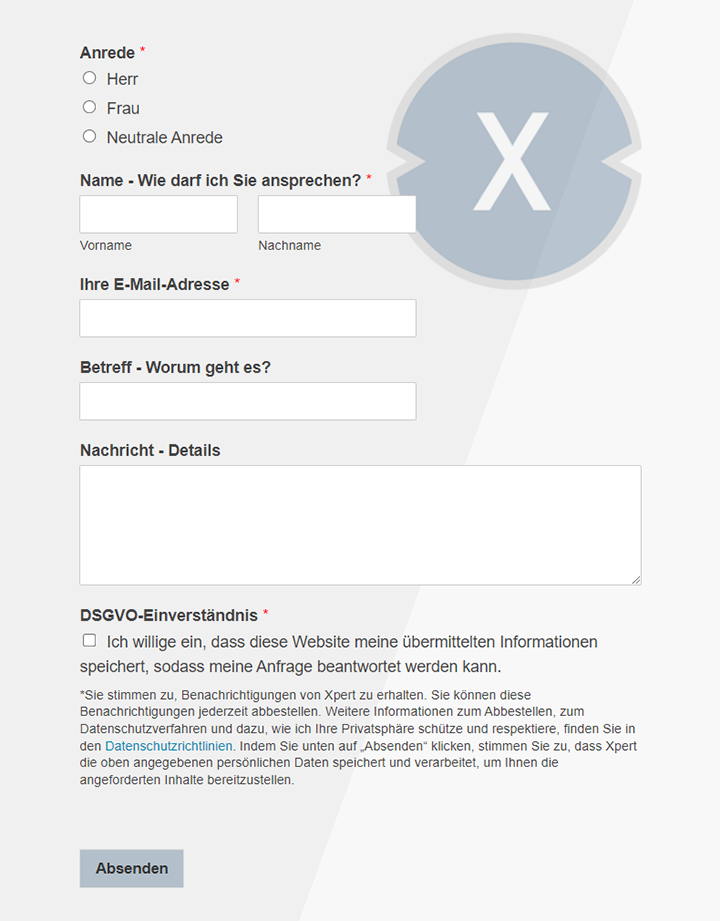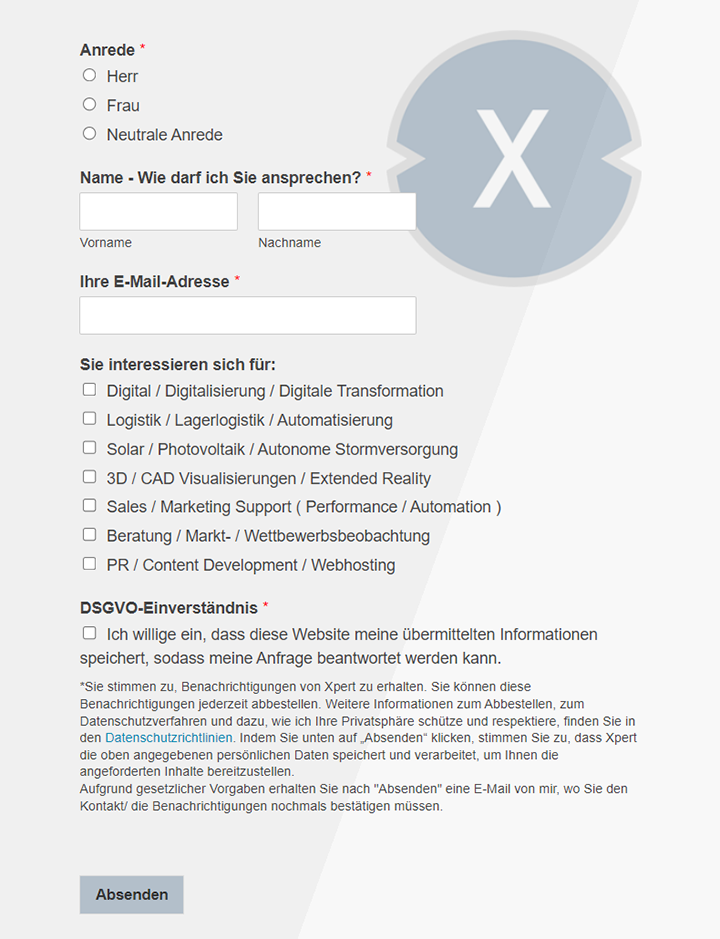China's industry weakens – Fifth month of negative growth – Questions and answers on the current economic situation
Xpert pre-release
Language selection 📢
Published on: September 3, 2025 / Updated on: September 3, 2025 – Author: Konrad Wolfenstein

China's industry weakens – Fifth month of negative growth – Questions and answers on the current economic situation – Image: Xpert.Digital
China's engine is sputtering: Why China's economy is really weakening
China's industry shrinks for the fifth consecutive month – PMI at 49.4; weak domestic demand, trade tensions and structural problems weigh on
What are the latest news about the Chinese economy?
Recent reports address the fact that China's manufacturing industry contracted for the fifth consecutive month in August. This means that economic activity in the manufacturing sector remains under pressure. The key indicator, the Purchasing Managers' Index (PMI) for manufacturing, was 49.4 points, just below the growth threshold of 50 points. This development is primarily due to weak domestic demand, international trade tensions, structural problems, and external factors such as extreme weather. At the same time, other sectors, particularly services and construction, are showing some resilience.
Suitable for:
The importance of the Purchasing Managers’ Index (PMI)
What exactly is the Purchasing Managers' Index and why does it play such an important role?
The Purchasing Managers' Index is a sentiment indicator regularly calculated through surveys of purchasing managers in companies. It provides information about the economic activity of a sector. A value above 50 points signals growth, while a value below this mark indicates contraction. The advantage of the PMI is that it provides a very timely picture of economic developments. Therefore, investors, analysts, and governments rely heavily on it to assess short-term trends.
How does the PMI behave when there is stagnation?
If the PMI is exactly at 50 points, this means neither growth nor contraction is being indicated. It indicates a certain stability, which, however, can also be interpreted as a period of uncertainty.
The current status in August
What did the PMI specifically say for Chinese industry in August?
Although the official manufacturing PMI rose to 49.4 points in August, this was not enough to reach the growth threshold of 50 points. In July, it was 49.3. Analysts had expected a reading of 49.5. The current reading thus demonstrates that while there is a minimal improvement, it has had virtually no noticeable impact on the trend: manufacturing continues to shrink.
What happens if the PMI remains in negative territory for several months?
If the PMI is below 50 for several consecutive months, this indicates a recessionary trend in that sector. This means that companies are producing less for an extended period, which can impact employment, supply chains, and the general economy. This is precisely what is currently happening in China, where industrial production has been trending negatively for several months.
Reasons for the decline in industrial production
Why is China's manufacturing sector currently shrinking so significantly?
Several factors come together:
- Trade tensions with the US – The conflicts between Washington and Beijing, which have intensified again since April, are significantly impacting export opportunities. Tariffs and counter-tariffs are making market access more difficult and trade more expensive.
- Extreme weather – Especially in the summer months, storms, heat waves, and floods have limited production at many factories. Infrastructure problems are exacerbating the impact.
- Policy measures to reduce capacity – Beijing has taken measures to reduce overcapacity in certain industries, particularly steel and chemicals. While this reduces overproduction, it has a negative impact on economic figures in the short term.
- Weak domestic demand – Chinese consumers are currently spending more cautiously. The reasons are the uncertain labor market situation and weak real estate prices, which are diminishing the sense of wealth among many households.
What role do international relations play for the Chinese economy?
An enormously important role. China's economy is heavily export-oriented. When access to important markets like the US is restricted, the consequences are immediate. In addition, many multinational companies are looking for alternatives to China, which intensifies competitive pressure. India, Vietnam, and Mexico are examples of countries that are benefiting from partial relocation of production.
Comparison between industry and service sectors
Is the economic downturn also affecting other sectors?
Interestingly, a different picture emerges: While the manufacturing sector is under pressure, the services sector has recently stabilized. The PMI for services and construction rose to 50.3 points in August, up from 50.1 points in July. This indicates slight growth in this sector.
Why is industry collapsing more sharply while services remain more stable?
There are several explanations for this:
- Services are less affected by tariffs and international trade barriers because they are mostly consumed locally.
- The construction industry benefits in part from government infrastructure programs with which Beijing tries to stimulate economic growth.
- The service sector is more dependent on consumption by the urban middle class. Even though consumer spending is weakening overall, there are still sectors such as healthcare, education, and digitalization where demand exists.
🎯🎯🎯 Benefit from Xpert.Digital's extensive, fivefold expertise in a comprehensive service package | R&D, XR, PR & SEM

AI & XR 3D Rendering Machine: Fivefold expertise from Xpert.Digital in a comprehensive service package, R&D XR, PR & SEM - Image: Xpert.Digital
Xpert.Digital has in-depth knowledge of various industries. This allows us to develop tailor-made strategies that are tailored precisely to the requirements and challenges of your specific market segment. By continually analyzing market trends and following industry developments, we can act with foresight and offer innovative solutions. Through the combination of experience and knowledge, we generate added value and give our customers a decisive competitive advantage.
More about it here:
Real estate bubble, municipal debt, climate — China's hidden risks explained
The overarching economic index
Is there an overall index that takes both sectors into account?
Yes, the so-called composite PMI combines data from manufacturing and services. It rose to 50.5 points in August, up from 50.2 the previous month. This means that China's overall economy is growing minimally when combined with manufacturing and services.
Suitable for:
How should this value be assessed?
While the index shows a positive trend, it is extremely fragile. If the manufacturing sector continues to decline significantly, the index could quickly fall below 50 again. The fact that the overall economy remains at a marginally positive level is largely due to the stabilization of the services sector.
The further challenges for China
What structural problems does the Chinese economy face?
There are several long-term challenges that exist independently of short-term trade disputes:
- Export dependence – China still produces heavily for the global market. Dependence on global demand makes the economy vulnerable to international crises.
- Real Estate Sector – Many Chinese cities are experiencing a slowdown in the real estate market. Developers are heavily indebted, and falling property prices are unsettling households.
- Labor market uncertainty – Young graduates, in particular, often cannot find jobs that match their qualifications. This leads to declining consumer confidence.
- Municipal debt – Many provinces have accumulated significant debt to finance infrastructure projects. Repaying this debt is made more difficult by the current economic situation.
- Climate change and extreme weather – China is particularly affected by floods, heat waves, and droughts. These impact not only industrial production but also agriculture.
Government policy and economic objective
What has the Chinese government set as its growth target for 2025?
The official goal of the government in Beijing is to achieve economic growth of around five percent this year. This is a relatively modest target by historical standards, as China has recorded double-digit growth rates for decades.
Is this goal realistic from today’s perspective?
Many economists are skeptical. Given the strains of the global economic slowdown, geopolitical tensions, structural reforms, and weather-related restrictions, some experts consider 5 percent to be elusive. Instead, growth in the range of 4 to 4.5 percent is considered more realistic.
International perspective
What impact could the downturn in China have internationally?
As the world's second-largest economy, China is extremely important for global trade. A slowdown in Chinese growth could have the following consequences:
- Reduced demand for raw materials such as iron ore, copper and oil, which would put pressure on prices worldwide.
- Decline in imports of consumer goods and machinery, which could affect export-oriented countries such as Germany.
- Financial markets are sensitive to signs of a significant weakening of China as investors price in the global growth risk.
Which countries might benefit from China's problems?
Countries that can serve as alternative production locations could benefit. These include Vietnam, India, Indonesia, and Mexico. These countries are increasingly being chosen by Western companies as risk-reducing alternatives to China.
Stabilization measures
What strategy is the Chinese government pursuing to stabilize the economy?
Politicians are currently pursuing several approaches:
- Monetary policy – The central bank is easing credit conditions to support businesses and consumers.
- Infrastructure projects – Investments in transport and energy networks should provide impetus.
- Promoting future industries – Growth is particularly focused on electromobility, digitalization, and renewable energies.
- Strengthening the domestic market – Consumer incentives are intended to increase the share of domestic demand in economic growth.
Would these measures be sufficient to resolve the problems in the short term?
Probably not. Many of the current difficulties are structural and cannot be solved through short-term programs alone. High levels of debt and the real estate crisis, in particular, cannot be overcome with simple stimulus measures.
Why China remains a key global player in the long term despite weakness
How might the Chinese economy develop in the coming months?
Manufacturing is expected to continue to weaken, especially as long as the trade conflict with the US remains unresolved. At the same time, the services sector could continue to grow slightly, thus offsetting some of the decline. However, growth will be more subdued, and the risk of a significant slowdown remains high.
Will China remain strong in the long term?
Yes, even if there are short-term setbacks, China remains a key player in the global economy. The sheer size of its domestic market, improved technological capabilities, and political control options ensure that China is unlikely to enter a permanent phase of stagnation. The question is rather at what level of growth the Chinese economy will stabilize in the long term.
We are there for you - advice - planning - implementation - project management
☑️ SME support in strategy, consulting, planning and implementation
☑️ Creation or realignment of the digital strategy and digitalization
☑️ Expansion and optimization of international sales processes
☑️ Global & Digital B2B trading platforms
☑️ Pioneer Business Development
I would be happy to serve as your personal advisor.
You can contact me by filling out the contact form below or simply call me on +49 89 89 674 804 (Munich) .
I'm looking forward to our joint project.
Xpert.Digital - Konrad Wolfenstein
Xpert.Digital is a hub for industry with a focus on digitalization, mechanical engineering, logistics/intralogistics and photovoltaics.
With our 360° business development solution, we support well-known companies from new business to after sales.
Market intelligence, smarketing, marketing automation, content development, PR, mail campaigns, personalized social media and lead nurturing are part of our digital tools.
You can find out more at: www.xpert.digital - www.xpert.solar - www.xpert.plus

















